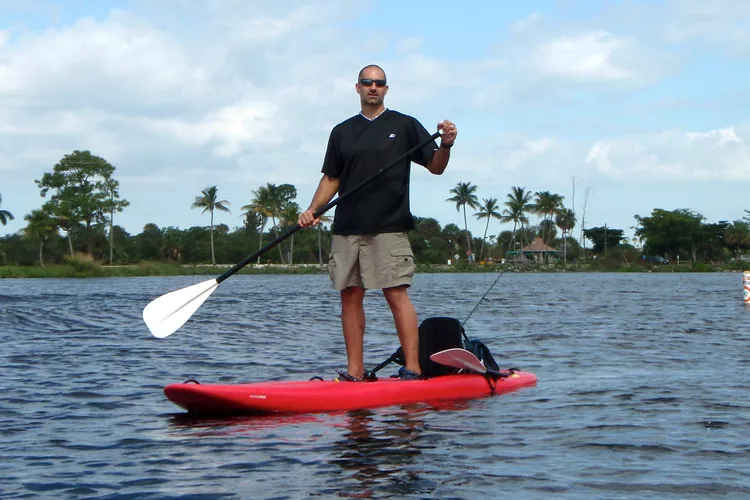Summary
What You Need to Add to Your Paddleboard
There are times during standup paddleboarding when it is advantageous to sit down and paddle your SUP like a kayak. Some plastic kayak manufacturers have created SUP-kayak hybrids to meet this need. However, if you have a plastic SUP, minor modifications can turn it into a SUP-kayak hybrid with little to no impact on your comfort and efficiency. Here’s essential information for converting your plastic standup paddleboard into a paddleboard-kayak.
1) Buy a Breakdown Kayak Paddle
The first essential item you’ll need is a kayak paddle, which does not require any modifications to your board. Many enthusiasts prefer a breakdown kayak paddle due to its convenience while being used on a SUP-kayak hybrid, as the two halves are manageable when attached correctly.
Moreover, some paddle manufacturers now offer SUP paddles that can convert into kayak paddles. Simply remove the t-handle to switch over from SUP to kayaking, replacing it with another blade in its place.
These specialized SUP paddles are designed for versatility; however, they may not perform as well in paddleboarding compared to dedicated kayak paddles, as kayak blade alignment is different. Still, most paddlers will find the transition seamless, particularly when using a plastic SUP.
2) Add a Kayak Seat
When adding a kayaking seat to your SUP, you have two options. The first is an old-school lower back band, primarily offering lumbar support rather than a full seat. Installing this only requires one set of cleats or loops on your paddleboard deck.
The second option is a complete kayak seat, featuring both a padded bottom and high backrest for enhanced comfort. This type requires two attachment points on each side, resulting in a total of four loops or cleats to secure the seat effectively.
When determining the best position for your back band or kayak seat, avoid assuming it should be centered. Instead, sit on the paddleboard while it is floating and ask a friend if it sits level on the water. Ideally, your SUP should appear almost flat, or slightly raised at the tip when paddled.
Attach the kayak seat closer to a balanced position as you test it out. Additionally, be mindful of the contour of your plastic paddleboard, which may affect the final seat placement. Follow installation instructions included with the seat kit, or consult with a kayak outfitter for assistance if you are hesitant about drilling into your board.
3) Install Paddle Holders
When transitioning from standing to paddling in a seated position, it’s crucial to have a designated place for your kayak paddle. An effective solution is to install two paddle holders on each side of the board, preferably toward the rear, allowing for easy access and secure storage.
By adhering to these guidelines, you will successfully transform your SUP into a versatile SUP-kayak hybrid, enhancing your paddling adventures.





